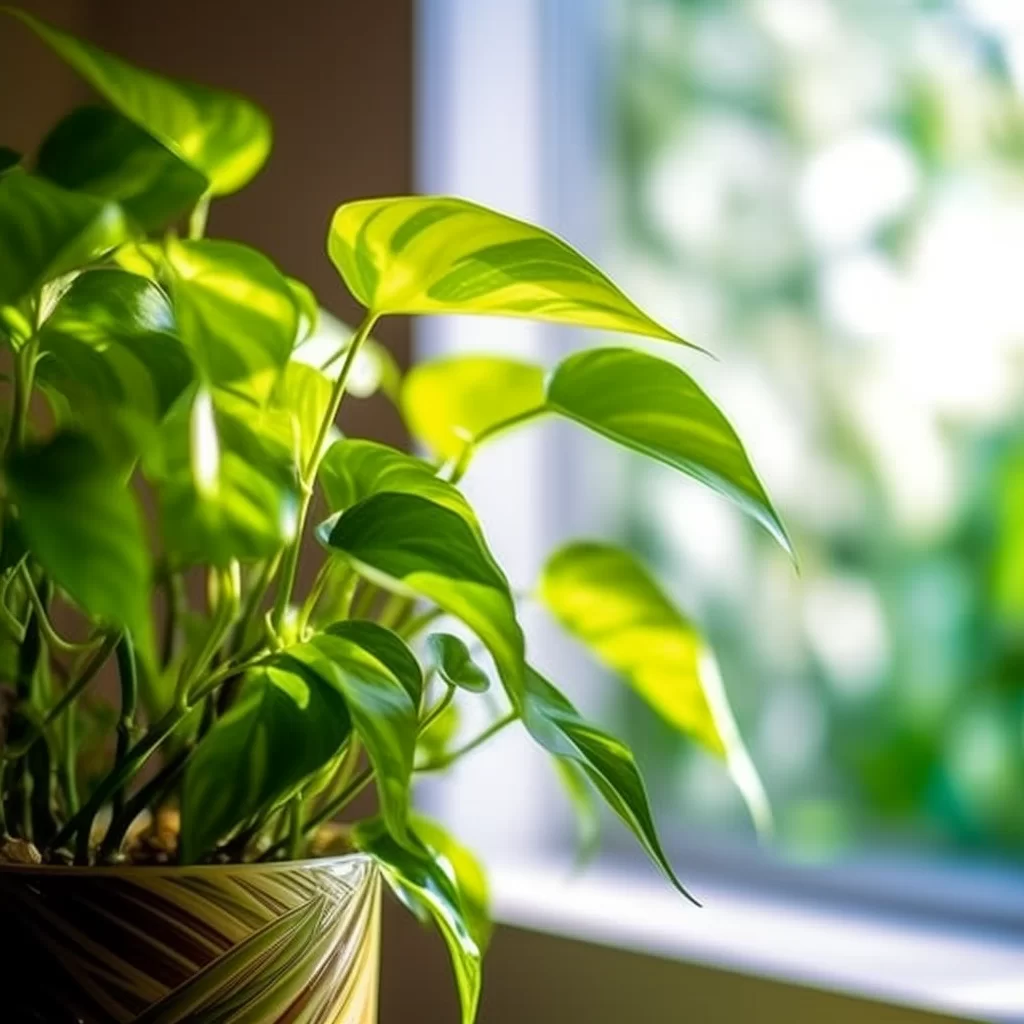Story of Day :
Contents
A Comprehensive Guide to Satin Pothos Plant: Care Tips and More
Gardening enthusiasts and plant lovers, welcome to a world of greenery, beauty, and relaxation.
Today we are going to dive into the wonderful satin pothos plant species.
What is Satin Pothos Plant?
Satin pothos plant (Scindapsus pictus) is native to Southeast Asia and belongs to the Araceae family.
It is also commonly known as silver vine or satin silver pothos due to its velvety foliage that shimmers in light.
The leaves of a mature satin pothos can grow up to 6 inches long with two-colored patterns – dark green on top and silver-gray marks underneath.
The vines can grow up to 10 feet long, making it an ideal trailing houseplant for indoor or outdoor spaces.

Care Tips for Satin Pothos Plant
- Light: The velvet-like leaves of a satin pothos are sensitive when exposed directly under the sun’s rays.
Therefore, indirect bright light is best for this type of plant – moderate filtered sunlight within your home’s walls will suffice.
- Water: Overwatering your satin pothos can lead it down a path toward root rot while little watering makes them droop in sadness.
You should ensure that your soil remains moist but not wet at all times by watering only when needed (every seven days).
- Fertilizer: Feed them with balanced liquid fertilizer once every month during spring through summer seasons only when they actively grow their foliage.
- Humidity: Being native plants from tropical regions where moisture levels are usually high means that these plants love humid conditions.
Thus, misting the foliage with room-temperature water or placing a tray filled with pebbles and water beneath them can help maintain proper levels of humidity.
- Temperature: Satin pothos plants thrive in temperatures ranging between 60°F to 85°F (15°C to 29°C).
Ensure that they are placed far away from cold drafts and air conditioning vents.
- Soil: This velvet vining plant species thrives in well-draining soil that is rich in organic matter – equal parts of potting soil, perlite, and peat moss work best for satin pothos plants.
Troubleshooting Common Problems with Your Satin Pothos Plant
Satin pothos plants are some of the easiest houseplants to take care of.
However, common problems may arise along the way.
- Drooping Leaves: Overwatering has been known to cause drooping leaves on satin pothos plants – ensure your plant’s pot has proper drainage holes while avoiding oversaturated soil.
- Brown Tips on Leaves: A lack of humidity within your home could lead to brown tips forming on its leaves.
Either increase your room’s humidity by misting its foliage regularly or relocate it near other humidifiers like a fish tank or indoor fountain.
- Pest Infestation: Though these velvety creatures seldom fall prey to pests and insects, mealybugs may cling onto their foliage.
If you spot any pest infestation early enough, wipe off their bodies using cotton balls soaked in rubbing alcohol before spreading all over your plant!

In Conclusion: Why Satin Pothos Plant is Worth Your Time and Care
Finally, we hope that you have enjoyed learning about the wonderful satin pothos plant.
This houseplant not only adds a touch of elegance and beauty to your surroundings but also purifies the air by removing toxins such as benzene, formaldehyde, and xylene.
If properly cared for, this low-maintenance plant can thrive for many years.
Hence why it’s essential to ensure it’s in an area with bright indirect light, well-draining soil rich in organic matter that is watered appropriately every seven days while misting its foliage frequently to maintain humidity levels.
Thank you for joining us on this adventure into the world of satin pothos plants’ care tips – until next time.
